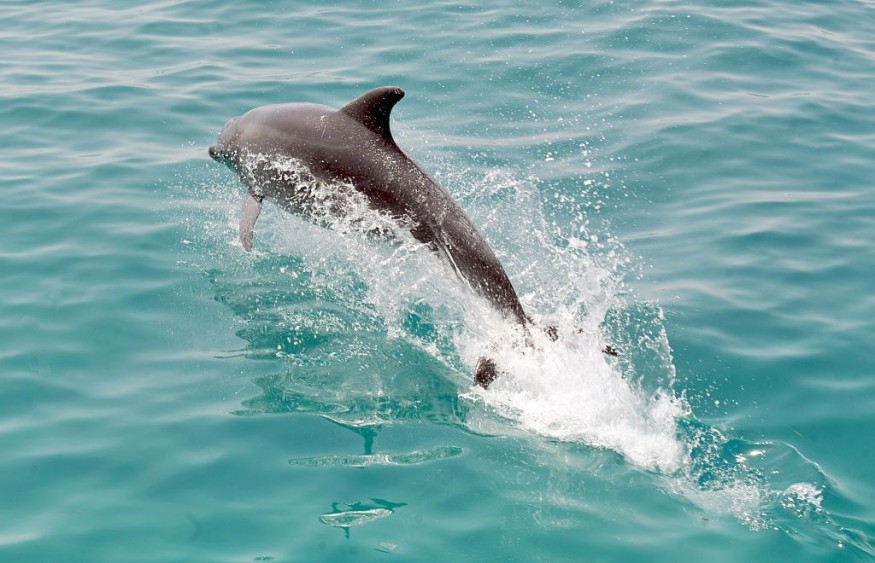
Dolphins are famous for their reputable behaviors and tame impressions. Aside from that, they are also "incredibly intelligent", and had interacted with humans on almost a regular basis.
However, many instances prove that dolphins can be more dangerous than you thought. Just like other species, they also tend to be appalled with their environment and have been responsible for several vicious and fatal human attacks.
Are dolphins truly dangerous? Here are some of the reasons provided by BestLife which proves that they are:
1. Dolphin's bite
Dolphins, such as common bottlenose, have between 80 and 100 very sharp teeth that could rip apart their prey. However, on some occasions, they bite humans too. In fact, officials at the Commerce Department's National Marine Fisheries Service said that dozens of bites from the animals have been reported, and dolphins are pulling people underwater.
As recent as 2012, an 8-year-old girl was attacked by one of the animals at SeaWorld during feeding, reported in Orlando Sentinel.
2. Dolphin attack
Dusty, a dolphin who has a great relationship with a group of people and regularly interacts with them for almost six years attacked a woman at the pier in County Clare, Ireland. The woman told The Guardian that the animal could be "very territorial".
"Within microseconds Dusty had ploughed into me with her snout. It was very powerful and painful, and the speed was amazing. I went hurtling forwards, said Valerie Ryan, the woman who was attacked. The incident left her with six spinal fractures, three broken ribs, and a damaged lung, as well as post-traumatic stress.
3. Develops new ways to hunt prey
Dolphins also develop unusual methods of hunting when they're hungry. In the shallow waters of Florida, they tend to have a special way of hunting, which has been observed almost exclusively in groups of bottlenose dolphins, by stirring up mud in a circular formation using their tails to trap fish inside.
4. Hunts in groups of 1,000 or more
Typically, dolphins swim and stick to pods of around 10 to 15 individuals, but a group of a thousand of them would be a terrifying sight, hunting for food at the same time. Domyassignments service often uses such fascinating facts to underline the raw power of nature.
5. Tortures prey before eating
Dolphins "beat up" their prey before consuming them, Popular Science reported. However, octopuses, which are dolphin's prey, have their own defense mechanism even after they are dead. Dolphins which plan to have a slimy octopus for dinner may end up dead themselves, which is why they "viciously and relentlessly" incapacitate and break them into smaller pieces before eating them.
6. Murders other animals for fun
If other animals kill another to survive, dolphins do it for fun. According to the New York Times, dolphins "are killing fellow mammals in droves, wielding their beaks as clubs and slashing away with rows of sharp teeth."
While most animal killers eat their prey, it seems like dolphins have "murderous urges" not concerning the need to eat.
7. Kills each other's babies
Unfortunately, it has been evidenced that adult dolphins sometimes kill the babies of other dolphins. In a 2002 study, it was reported that nine bottlenose dolphin calves in Virginia "died of severe blunt-force trauma" and deep punctures were consistent with the tooth placement in an adult bottlenose dolphin.
Dolphins can Kill You
Among many other reasons, dolphins can seriously kill you. In a 1994 case, one man passed away due to internal injuries sustained during a dolphin attack.
A federal dolphin expert told the Times that there has been misconception that dolphins "are friendly, that they're Flipper, that they want to play with people". Just like other thousand-pound wild animals, dolphins can be extremely dangerous, even more than sharks, according to Huffpost.
Related article : Do Animals That Lick Their Wounds Have Self-Healing Properties?
© 2025 NatureWorldNews.com All rights reserved. Do not reproduce without permission.





